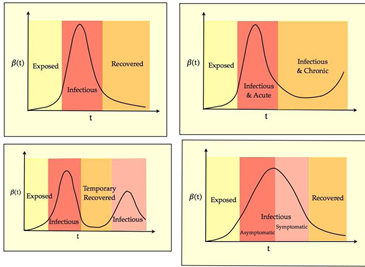How to Predict Pandemics
In the last couple of weeks, mathematical epidemiologists around the world have been racing to determine how swine flu will spread.

The puzzle centres on a quantity known as the reproduction number (R0) which is a fundamental property of any infectious disease. It is defined as the expected number of new infections caused by a typical individual during the whole period of his or her infection, in a totally susceptible population.
R0 is important because epidemiologists can use it to determine the final size of an outbreak. But estimating R0 in the early stages of an outbreak, when it is most useful, is hugely difficult.
Today, Bahman Davoudi from the British Columbia Centre for Disease Control in Canada and a few friends propose a way to estimate R0 far earlier in an outbreak than has been possible before. And that may have important implications for the way governments control the spread of new diseases in future.
The new method determines R0 using three quantities that can be measured early in an outbreak. The first is the infection rate probability which, for viral diseases, is related to the viral load of infectious individuals and can be calculated from their blood serum.
The second is the removal rate probability: how quickly individuals are removed from the scenario through factors such as death, quarantine and other means to reduce social contact. This is also relatively straightforward to measure early on.
The final factor is the rate at which new cases appear which again can be measured early in an outbreak.
What’s interesting about this method is that Davoudi and co then use this information to see how the disease spreads using our existing knowledge of social networks–for example, how often people meet and where. That’s what makes the approach so powerful.
They’ve tested the model in various simulations and say it gives them an accurate value for R0 right at the start of an outbreak. What’s more, it’s possible to calculate R0 in real time as the outbreak begins.
That could make this a hugely valuable tool for determining how common diseases spread such as less virulent forms of flu and also for planning a response to the next outbreak on the local, national and even the global scale.
Ref:arxiv.org/abs/0905.0728: Early Real-time Estimation of Infectious Disease Reproduction Number
Keep Reading
Most Popular
Large language models can do jaw-dropping things. But nobody knows exactly why.
And that's a problem. Figuring it out is one of the biggest scientific puzzles of our time and a crucial step towards controlling more powerful future models.
How scientists traced a mysterious covid case back to six toilets
When wastewater surveillance turns into a hunt for a single infected individual, the ethics get tricky.
The problem with plug-in hybrids? Their drivers.
Plug-in hybrids are often sold as a transition to EVs, but new data from Europe shows we’re still underestimating the emissions they produce.
Google DeepMind’s new generative model makes Super Mario–like games from scratch
Genie learns how to control games by watching hours and hours of video. It could help train next-gen robots too.
Stay connected
Get the latest updates from
MIT Technology Review
Discover special offers, top stories, upcoming events, and more.